Understanding ABA Therapy and Its Impact
Applied Behavior Analysis (ABA) therapy is a scientifically supported intervention method tailored to enhance behaviors and skills in children with Autism Spectrum Disorder (ASD). Central to many autism skill development centers, ABA utilizes evidence-based techniques to foster communication, social interaction, and independence, supporting children in reaching their full potential. The structured nature and individualized approach of ABA make it an indispensable component of comprehensive autism programs.
Core Techniques and Methodologies in ABA Therapy
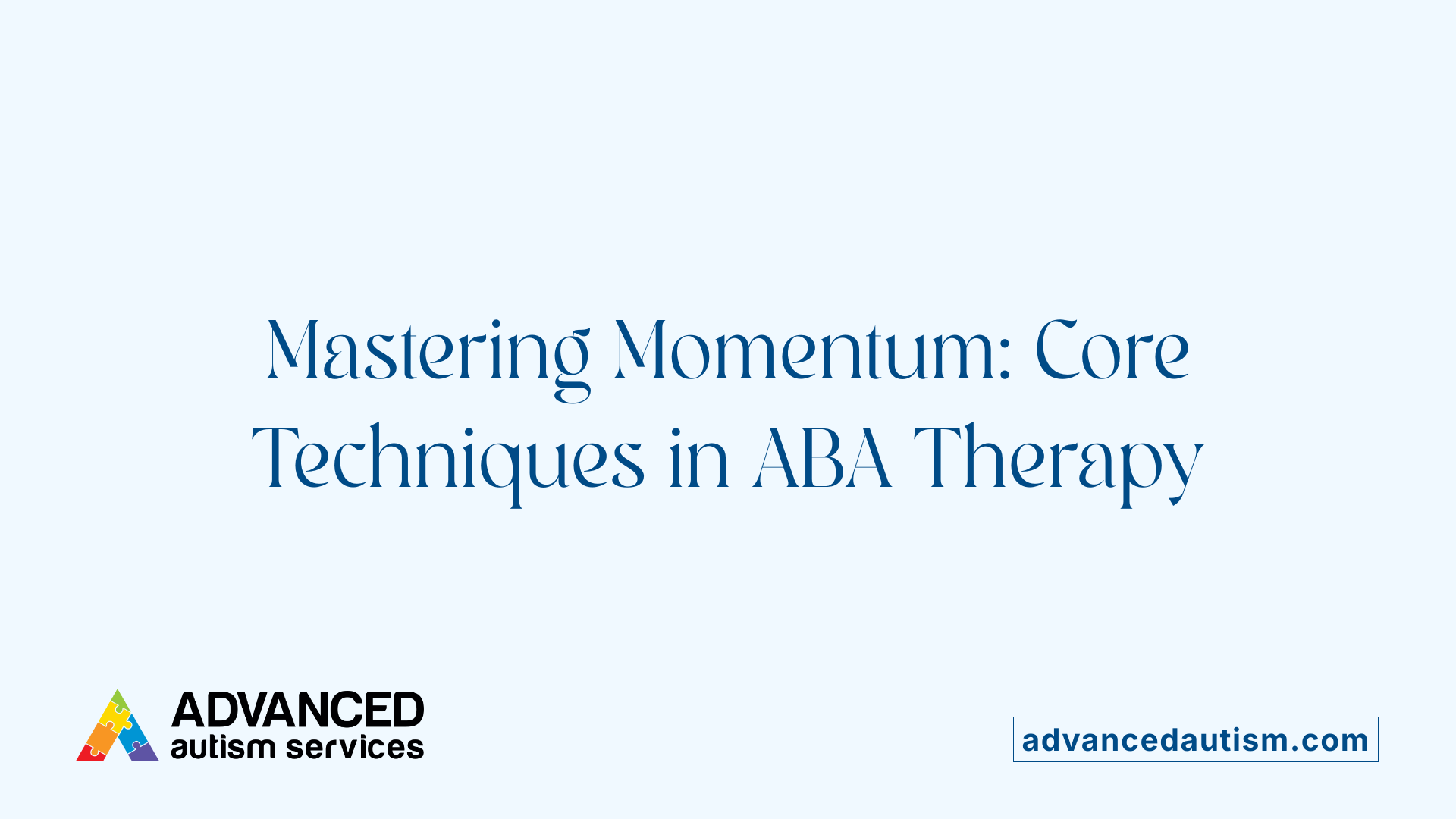
What are the main techniques and methods used in ABA therapy for children with autism?
Applied Behavior Analysis (ABA) therapy is renowned for its scientifically supported strategies that help children with autism gain new skills and diminish undesirable behaviors. A variety of approaches are combined within ABA to tailor interventions to each child's unique needs.
One foundational technique is Discrete Trial Training (DTT). DTT offers highly structured, repetitive teaching sessions where each step of a skill is broken down into small, manageable components. The therapist presents a clear instruction, provides reinforcement when the child responds correctly, and then gradually increases difficulty or complexity.
Complementing DTT is Natural Environment Teaching (NET). NET focuses on encouraging learning within real-world situations, such as playtime or everyday routines. This approach improves the child's ability to apply skills in diverse settings, fostering generalization and independence.
In addition to these, techniques like verbal behavior interventions emphasize the functional use of language, helping children communicate their needs effectively. Prompting and fading are used to guide the child through tasks, with prompts gradually lessened as independence increases.
Behavior chaining involves teaching complex activities by linking smaller steps together, essential for mastering daily routines. Video modeling offers visual demonstrations of desired behaviors, which children can imitate, enhancing observational learning.
Reinforcement strategies are central to all these methods. Positive reinforcement involves rewarding desired behaviors with praise, tokens, or other incentives to encourage repetition. Conversely, negative reinforcement can help reduce problematic behaviors by removing unpleasant stimuli when appropriate.
Fundamentally, ABA relies on analyzing behaviors to understand their antecedents and consequences. This behavior analysis guides the development of individualized intervention programs, often overseen by trained professionals such as Board-Certified Behavior Analysts (BCBAs). The integration of these techniques aims to cultivate vital communication, social, self-care, and academic skills, promoting a comprehensive developmental progression for children with autism.
Benefits and Outcomes of ABA Therapy for Children
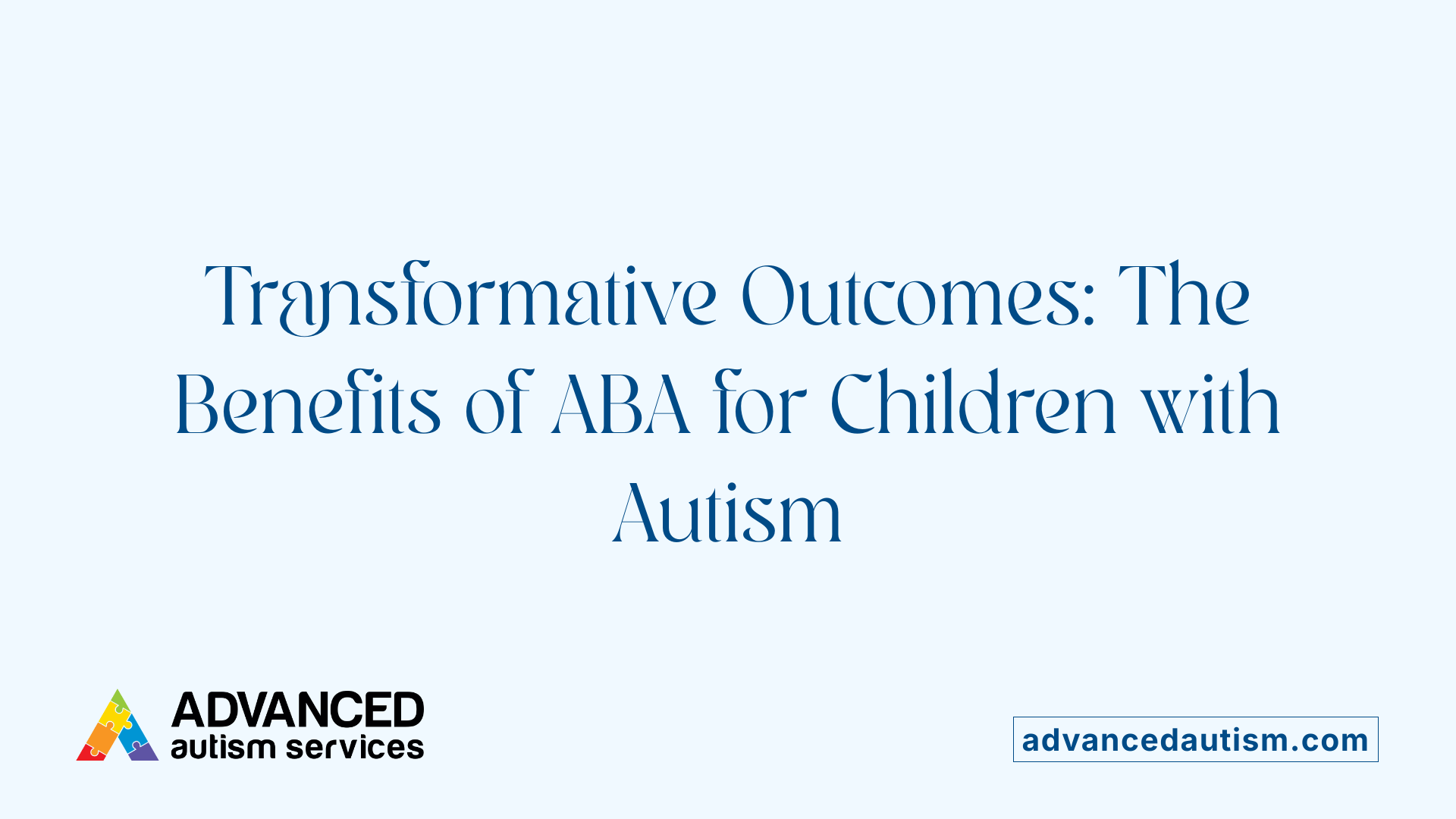
What are the benefits of ABA therapy for children with autism?
Applied Behavior Analysis (ABA) therapy offers a wide range of benefits for children with autism spectrum disorder (ASD). Supported by extensive research, ABA has proven effective in helping children gain vital skills. These include improved communication abilities, enhanced social skills, and better performance in academic settings.
One of the most significant benefits is the development of daily living activities. Children learn to dress themselves, use the bathroom independently, and sleep more regularly. When started early, especially before the age of 4, intensive ABA interventions can lead to notable developmental progress. This early start can reduce the need for specialized services later in life, promoting a more independent and fulfilling future.
ABA therapy is highly personalized. Therapists employ strategies like positive reinforcement, prompting, and shaping to design unique treatment plans that match each child's interests, strengths, and needs. This customization fosters engagement and maximizes learning.
Parents and caregivers are crucial partners in this process. ABA programs often include parent training, equipping families with practical tools to reinforce skills at home effectively. This involvement not only accelerates progress but also empowers families to become active advocates for their child's development.
Beyond skill acquisition, ABA supports positive behavioral changes. Children learn to better regulate emotions, reduce challenging behaviors, and improve their ability to adapt to different environments. Overall, ABA therapy aims to help children with autism function more independently, confidently, and happily in daily life.
How does early intervention enhance developmental outcomes?
Starting ABA therapy early, particularly during preschool years, can lead to substantial improvements in developmental trajectories. Early intervention takes advantage of the brain's plasticity, allowing children to establish foundational skills that support ongoing learning.
Research indicates that children receiving prompt and intensive ABA treatment exhibit gains in language, social interaction, and academic readiness. These improvements increase their ability to participate in school and community activities, fostering greater integration and social acceptance.
What role do parents play in the success of ABA therapy?
Parents are vital in extending the benefits of ABA beyond the therapy setting. Through caregiver training, they learn techniques to reinforce desired behaviors and skills at home. Consistent practice and encouragement help solidify learning and promote generalization across different settings.
Furthermore, active parental involvement fosters a positive, collaborative relationship with therapists. This partnership ensures that interventions remain aligned with the child's evolving needs and family circumstances.
What are the long-term benefits and behavioral improvements?
Long-term outcomes of ABA therapy often include sustained behavioral improvements, increased independence, and better quality of life. Children tend to demonstrate reduced challenging behaviors, like tantrums or self-injury.
Many children develop social skills that enable them to form friendships, participate in group activities, and function effectively in community settings. Over time, these gains can lead to greater self-confidence and self-esteem.
ABA therapy's structured approach and emphasis on data-driven progress allow continuous adjustment of strategies, ensuring ongoing reinforcement of positive changes.
Summary Table of ABA Therapy Benefits
| Skill Area | Typical Outcomes | Supporting Details |
|---|---|---|
| Communication | Improved expressive and receptive language | Use of visual supports, speech devices, and social cues |
| Social Skills | Enhanced peer interactions and social understanding | Peer play, social stories, and role-playing exercises |
| Daily Living Activities | Increased independence in routine tasks | Self-care training, task chaining, and prompting techniques |
| Behavioral Regulation | Reduced challenging behaviors | Functional Behavior Assessments (FBAs) and behavior plans |
| Academic Skills | Better school readiness and participation | Structured learning games, play sessions, and assessments |
How do tailored intervention programs support developmental growth?
Personalized ABA programs are designed based on comprehensive assessments, including tools like the ADOS-2, to identify specific strengths and challenges. These tailored programs focus on developing essential skills such as coping strategies, motor skills, visual perception, and self-care. With consistent monitoring and goal adjustments, children can make steady progress towards greater independence and social participation.
In essence, ABA therapy not only targets immediate behavioral challenges but also fosters lifelong skills that improve overall well-being and integration into society.
Types of ABA Therapy Programs and Customization
What types of ABA therapy programs are available, and how do they differ?
ABA therapy offers a range of programs to suit the unique needs of children with Autism Spectrum Disorder (ASD). These programs vary in duration, focus, and intensity, allowing for personalized approaches that maximize developmental progress.
One prominent example is comprehensive, intensive programs like Early Intensive Behavioral Intervention (EIBI). EIBI typically involves up to 40 hours of therapy per week in a one-on-one setting. It targets multiple developmental domains, including communication, social skills, daily living skills, and behavior reduction. This approach is especially effective for very young children, usually ages 2 to 6, aiming to create significant lifelong improvements.
In contrast, shorter, targeted therapies focus on specific skills or behaviors. These may include programs designed to improve speech, reduce tantrums, or develop social interaction skills within a shorter timeframe. Such focused interventions are often used alongside comprehensive programs or as interim steps.
Common structured techniques in ABA therapy include:
| Technique | Description | Typical Use | Additional Details |
|---|---|---|---|
| Discrete Trial Training (DTT) | Highly structured, therapist-directed learning | Skill acquisition like communication or motor skills | Uses repeated trials, prompts, and reinforcement |
| Pivotal Response Training (PRT) | Naturalistic, play-based approach | Social skills, motivation, language | Focuses on pivotal developmental areas, encouraging generalization |
| Natural Environment Teaching (NET) | Learning within everyday settings | Functional communication, social interaction | Emphasizes spontaneous and functional use of skills |
| Verbal Behavior Therapy | Focused on language development | Speech and communication skills | Inspired by B.F. Skinner's analysis of language |
Personalization based on each child's needs and family preferences
Choosing the right ABA program depends on a variety of factors. Therapists consider the child's age, strengths, challenges, and developmental goals. For example, some children benefit from highly structured, intensive programs like EIBI early on, which can significantly boost foundational skills.
Others may require more naturalistic, play-based methods that encourage spontaneous social interactions and communication. Parental input is crucial in this process. Families often collaborate with clinicians to select approaches aligned with their routines, cultural values, and support systems.
Flexibility is built into modern ABA services. Many programs integrate multiple strategies—combining structured techniques like DTT with naturalistic methods such as PRT—to create holistic, engaging, and effective interventions.
Overall, the goal is to craft a tailored plan that promotes meaningful progress, maximizes strengths, and addresses specific challenges, ensuring the child receives the most appropriate and effective support possible.
Role of Parents and Caregivers in Skill Development
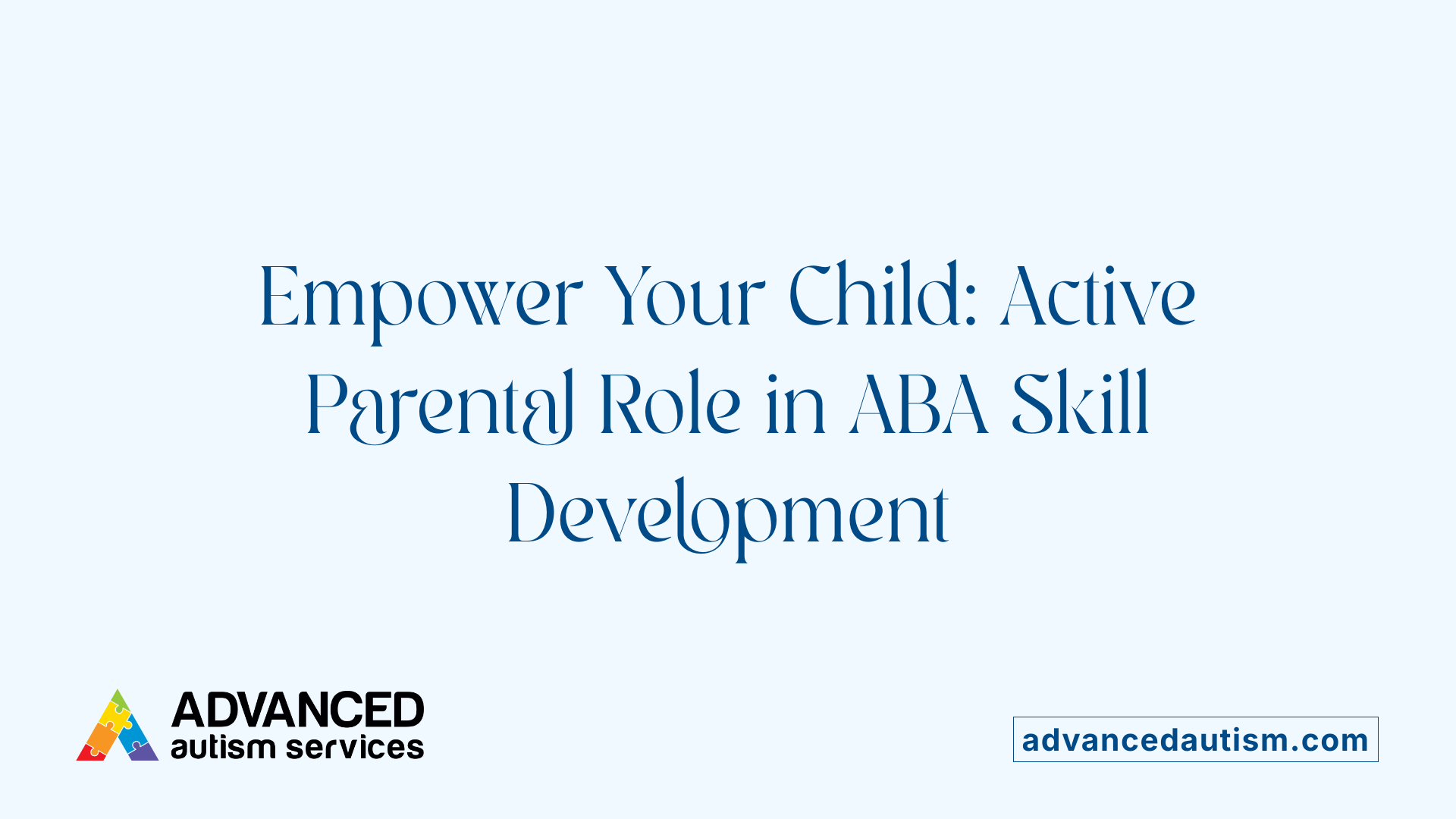
How can parents and caregivers support skill development through ABA therapy?
Parents and caregivers play a crucial part in reinforcing and extending the benefits of ABA therapy outside the clinical setting. They can support skill development by actively applying strategies learned from therapists, such as positive reinforcement, modeling desired behaviors, and establishing structured activities at home. These techniques help children understand expectations and develop new skills more effectively.
Creating opportunities for social practice is also essential. Caregivers can facilitate everyday interactions like turn-taking, eye contact, and emotional recognition during routines or playtime. Incorporating social stories or engaging in interactive play can further enhance social and communication skills.
Collaboration with ABA therapists is vital for consistency and success. Regular communication ensures that caregivers are aligned with treatment goals and methods, which helps in reinforcing skills between therapy sessions. Caregivers can participate in planning and adapting activities suitable for their child's environment and developmental level.
Targeted activities such as role-playing, use of visual supports, and social skills exercises can provide meaningful practice in real-life situations. Consistent reinforcement—using praise, rewards, and encouragement—encourages children to repeat positive behaviors and skills.
Patience and persistence are key. The child's progress depends heavily on the ongoing support and reinforcement provided at home. When parents and caregivers actively participate, they help facilitate the generalization of skills across different settings, ultimately leading to more profound development and independence.
This active engagement not only accelerates learning but also boosts the child's confidence and sense of security, making ABA therapy more effective and meaningful.
Promoting Social Skills and Community Integration
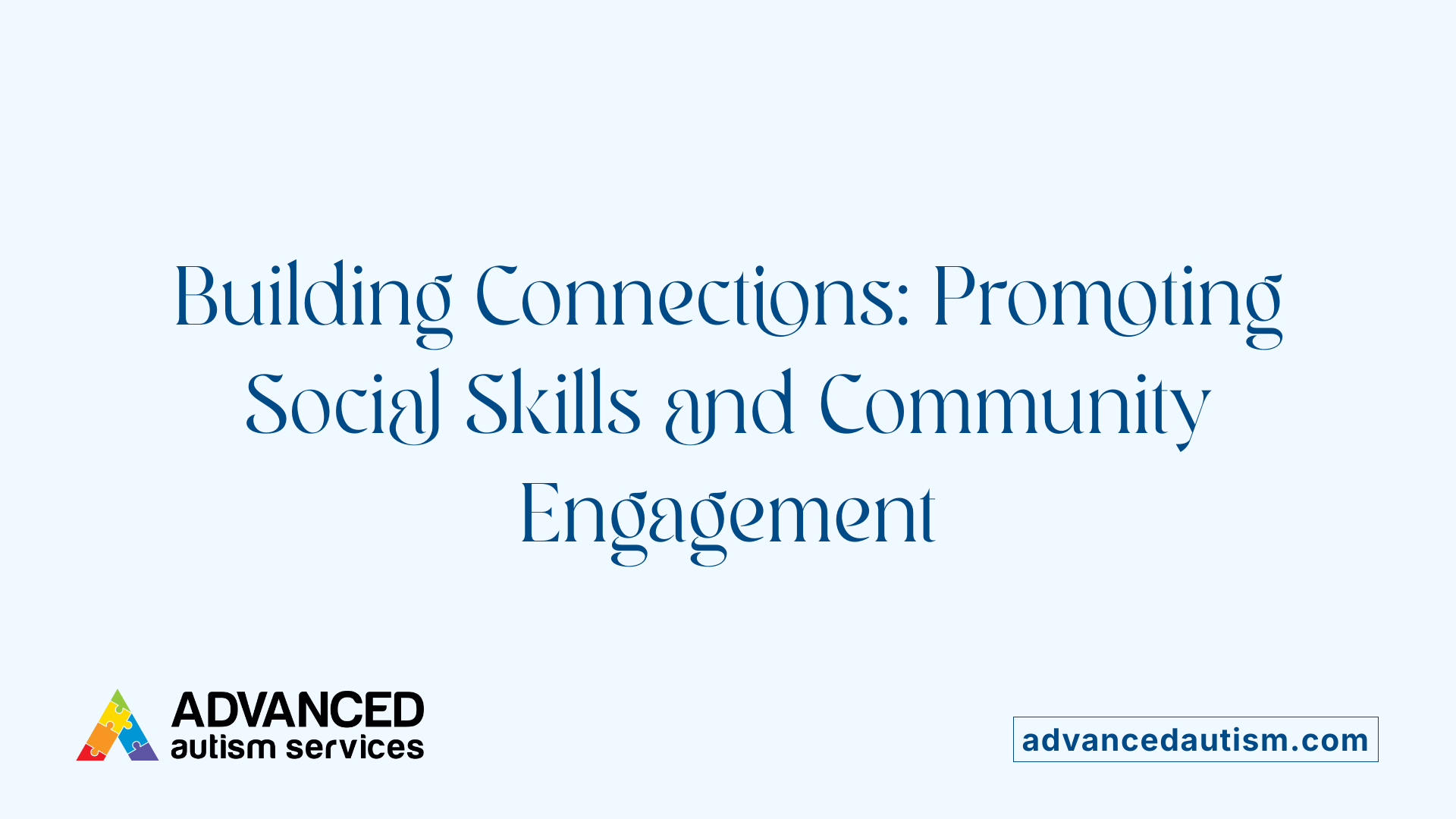
How does ABA therapy promote social integration and community participation for children with autism?
ABA therapy plays a vital role in helping children with autism develop social skills necessary for community involvement. Through carefully tailored, structured programs, children learn fundamental social behaviors such as making eye contact, sharing, taking turns, and effectively communicating.
One of the main techniques used is role-playing, which allows children to practice social interactions in a safe and controlled environment. Social stories and video modeling are also employed to teach children about social norms and appropriate behaviors in various contexts. These methods help children understand expectations and prepare them for real-world situations.
In addition, ABA programs include community outings and real-life practice opportunities. Such activities enable children to apply their skills outside the therapy setting, fostering independence and confidence. During these outings, children work with their therapists and family members to navigate social environments, such as parks, grocery stores, or playgrounds.
Involving community and educational settings is crucial for generalizing skills. Therapists collaborate with parents, teachers, and community leaders, ensuring consistent reinforcement of social behaviors across different environments. This teamwork supports sustained improvements in social interactions and helps children adapt more easily to new settings.
Moreover, the use of technology-based tools, like communication devices and apps, complements in-person therapy. These tools support ongoing practice and reinforce positive social behaviors over time.
Overall, ABA therapy fosters social integration by teaching essential skills, providing opportunities for practice, and promoting continuous generalization of these skills across daily life and community contexts.
Creating a Stimulating and Supportive Learning Environment
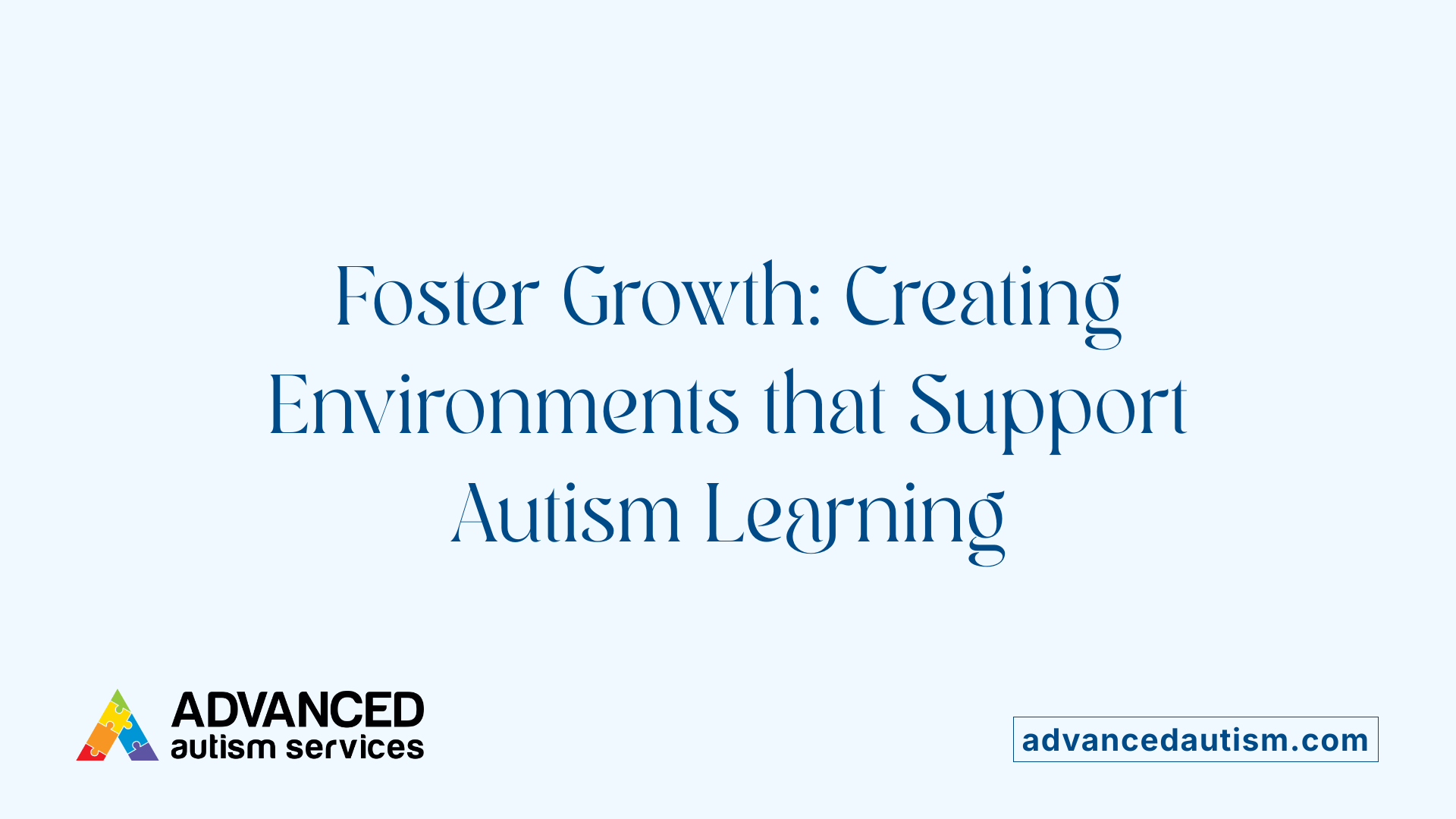
Use of sensory equipment, visual supports, communication devices
Center-based ABA therapy settings are equipped with specialized tools to meet the sensory and communication needs of children with Autism Spectrum Disorder (ASD). Sensory equipment such as swing stations, tactile mats, and calming corners help regulate sensory input, creating a comfortable environment that promotes focus and learning. Visual supports, including picture exchange communication systems (PECS), visual schedules, and communication boards, assist children in understanding routines and expressing themselves more effectively.
Communication devices like tablets with dedicated apps or speech-generating devices are often incorporated to enhance language development. These tools support children in gaining confidence in communication, which is critical for social skills and behavior management.
Age-appropriate engaging activities like play and learning games
Therapists design activities that are tailored to each child's developmental stage. For younger children, this may mean playful, engaging tasks like interactive play sessions, sensory play, or structured games that encourage turn-taking and social interaction.
For school-age children and teenagers, activities might include more advanced learning games, social skills training, and exercises that promote independence and daily living skills. These age-appropriate activities are designed to make learning enjoyable, boost motivation, and foster essential skills.
Minimizing distractions for enhanced focus
A controlled environment is central to effective ABA therapy. Centers reduce noise levels and clutter, creating a distraction-free space that helps children concentrate on their activities. Dedicated areas are set aside for different types of learning and play, allowing children to switch smoothly between tasks.
This structured setup minimizes external stimuli that could interfere with learning, thereby improving the child's ability to stay engaged and absorb new skills. It also supports children with sensory sensitivities by controlling lighting, noise levels, and other environmental factors.
Specialized equipment for sensory and communication needs
Many centers use advanced equipment designed to cater to sensory regulation and communication improvements. This includes tactile toys, sensory bins, weighted blankets, and specialized sensory integration tools.
Communication aids such as AAC (Augmentative and Alternative Communication) devices, visual timers, and adaptive learning tools are standard features aimed at supporting children’s individual needs and promoting their self-reliance.
Professional collaboration for individualized plans
Therapists, including Board-Certified Behavior Analysts (BCBAs) and Registered Behavior Technicians (RBTs), work closely together to develop and constantly refine individualized treatment plans. They collaborate with parents, teachers, and other healthcare providers to ensure consistency across settings.
This teamwork enables the creation of highly personalized programs that incorporate evidence-based ABA techniques, accommodate each child's learning style, and adapt to their evolving progress. Regular team meetings and progress reviews ensure that interventions remain aligned with developmental goals and family needs.
Making Informed Choices and Embracing Support
Selecting the right ABA therapy center involves considering the individual needs of the child, the credentials of the professionals, program structure, and family involvement. Center-based ABA therapy offers a controlled environment that maximizes learning opportunities, socialization, and skill development. By understanding the techniques, benefits, and community roles of ABA programs, parents and caregivers can actively support their child's growth. Integrating therapy success with ongoing family participation and community engagement paves the way for meaningful progress, independence, and a richer quality of life for children with autism.
References
- Impact of Center-Based ABA Therapy Curriculum
- Center Based ABA Therapy | Norfolk Autism Center
- ABA Therapy Smyrna GA - Flywheel Centers
- ABA Therapy for Autism Charlotte, NC - Child & Family Development
- Child ABA Therapy - ABA Centers of Connecticut
- Best ABA Therapy in Durham, NC - AutismCOE
- Applied Behavior Analysis (ABA) | Autism Speaks
- Understanding ABA Techniques: 7 Strategies You Need to Know



